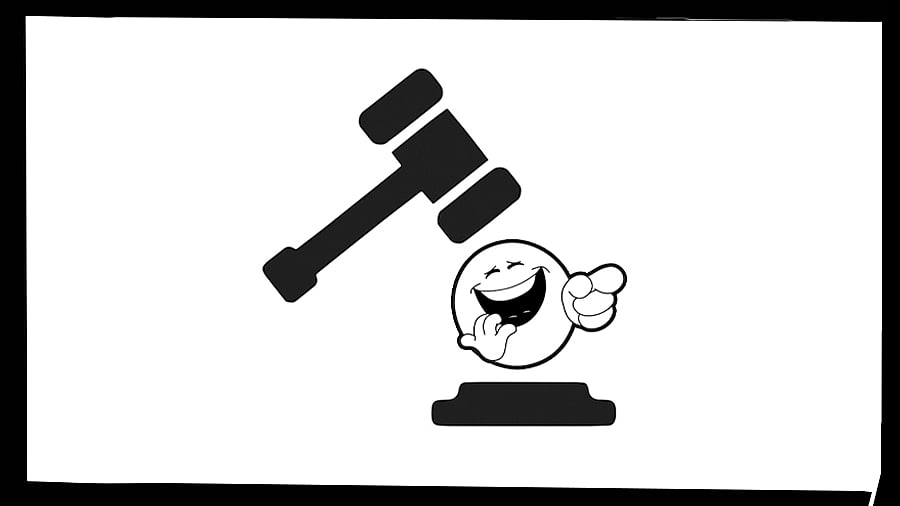
In a video titled Narak which has since been removed from YouTube, comedian Samay Raina made a joke about the high cost of treating a months-old child with Spinal Muscular Atrophy, suggesting that some might hesitate to spend such a large sum given the child’s age. He was also reported to have made some insensitive remarks about persons with visual impairment.
This prompted the NGO Cure SMA Foundation of India to approach the Supreme Court, where it argued that such content amounts to a misuse of the right to freedom of speech under Article 19(1)(a).
It emphasised that this form of “disabling humour” spreads offensive stereotypes against Persons with Disabilities (PwDs) and contributes to their marginalisation and alienation.
The plea also raised the need for clear and adequate regulatory safeguards to distinguish between humour that challenges stereotypes and humour that dehumanises and ridicules.
The court expressed deep concern over the allegations and termed the matter “very serious”. This case brought into focus whether humour, especially in its darker forms, should be subject to legal restrictions or remain untouched under the fundamental right to freedom of speech.
This is not the first time that the court has entertained a matter at the crossroads of disability and comedy. In a related case in July 2024, a disability activist had moved the Supreme Court highlighting the problematic portrayal of PwDs in the film Aankh Micholi, which featured derogatory terms and misrepresentations of medical conditions such as night blindness. It was argued that the film reinforced stereotypes and sought guidelines for content creators.
In response, the Supreme Court held that the filmmakers had the right to freedom of expression and creative liberty, but it could not be misused to entrench prejudices and harmful stereotypes against PwDs.
Subsequently, the court directed that language reinforcing pity or tragedy be avoided. It emphasised that characters with disabilities should be portrayed with dignity and realism. Most critically, it underscored the principle of “nothing about us without us,” mandating the participation of PwDs in evaluating such content.
In a similar vein in September 2024, the Supreme Court introduced the Handbook on Disability and Mental Health to guide judges on using respectful and neutral language while addressing PwDs in judicial documents and discourage the usage of terms that patronise or dehumanise them.
Both these interventions fortify the Supreme Court as an anti-majoritarian institution that guards the marginalised communities from stigma and foreground the self-esteem, dignity, and cultural diversity of the disabled guaranteed to them under the Rights of Persons with Disabilities Act, 2016 and the Constitution.
The framing of judicial directions, their voluntary adherence by creators, and checks by the audiences through mass acceptance or rejection of the content have peacefully coexisted with the right to speech and expression. However, in Raina’s case, the concern is more structural. The plea was clubbed with broader petitions related to the India’s Got Latent controversy, which spotlighted sexually explicit content circulating on
social platforms. In this matter, the Supreme Court had earlier asked the Centre to consider framing regulatory guidelines to control such content – urging caution to avoid excessive censorship. But letting the executive decide which jokes can be cracked on the disabled creates room for vague frameworks that may inadvertently compromise creative liberty and public discourse.
Courts often caution the government on the chilling effect that excessive censorship can have on the right to freedom of expression. Yet, once the responsibility for defining and policing content shifts from the judiciary to the executive, the process becomes less transparent and more susceptible to unilateral discretion.
State and censorship
Section 69A of the Information Technology Act, 2000 and the opaqueness around its operationalisation is a case in point. This provision empowers the Ministry of Electronics and Information Technology to block public access to any online information if it is considered to be a threat to national sovereignty, public order, or state security. The provision is frequently invoked to prevent incitement to violence, curb hate speech, or stop the spread of misinformation. Rule 16 of the Information Technology (Procedure and Safeguards for Blocking for Access of Information by Public) Rules, 2009 enables the government to maintain strict confidentiality, meaning that the public – and often even the content creators – may never know why the content was blocked or who initiated the process.
As against the executive, the courts provide a more transparent and accountable forum for regulating speech. They are better exposed to the technicalities of the constitutional tests under Article 19(1)(a) and can decide based on constitutional fidelity, instead of political expediency. Additionally, judicial proceedings are governed by the principles of natural justice, which guarantee fairness, and open justice that ensures adequate public scrutiny of its judgements.
Dark comedy, as scholars like Helen Anderson argue, enables individuals to confront difficult truths and subvert dominant narratives. While it may provoke discomfort, it often does so with the intent to question, not to harm. The utility of such humour is that it initiates a dialogue, challenges prejudices, and fosters empathy, instead of reinforcing discrimination, but only if the lines are drawn carefully.
In the Aankh Micholi case, the Supreme Court offered an instructive insight into where the line must be drawn. It emphasised the need to differentiate between “disabling humour”, which demeans and disparages persons with disabilities and “disability humour”, which seeks to challenge stereotypes and promote a deeper understanding of the lived experiences of the disabled. As the Court noted, the two are not equivalent in their impact: one undermines dignity and the other affirms it.
The lines around comedy – especially when it touches on disability – must be drawn with care and constitutional sensitivity. More crucially, the pencil that draws this line must rest in the hands of judges, not bureaucrats.
(The writer is a visually impaired
research fellow at Vidhi Centre for Legal Policy)